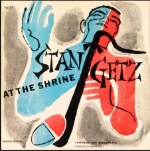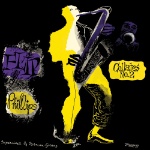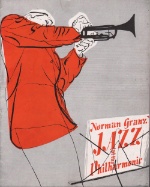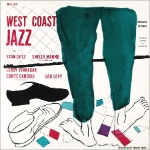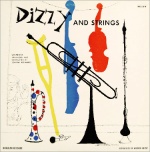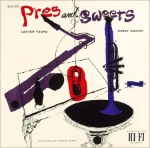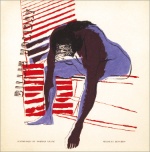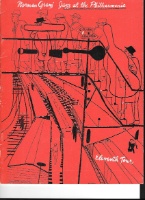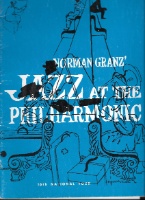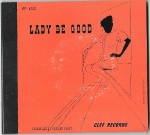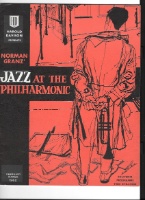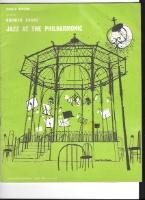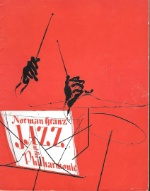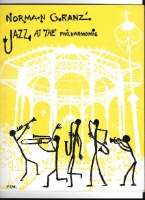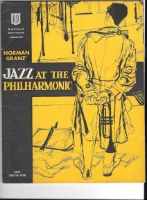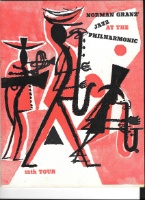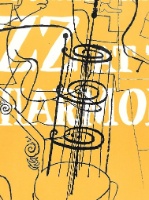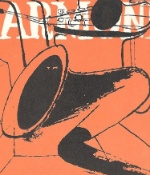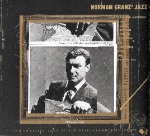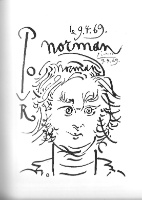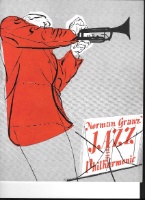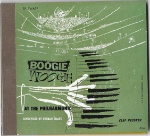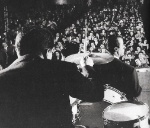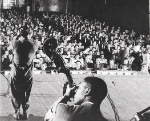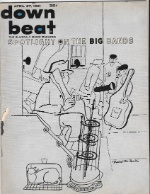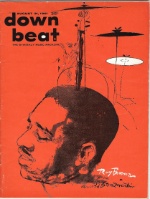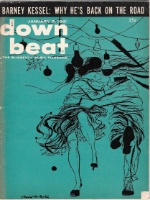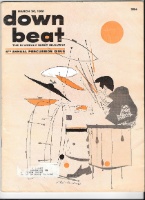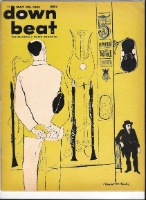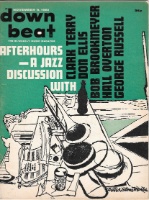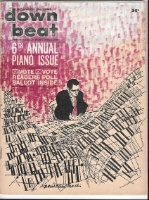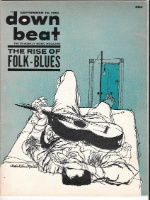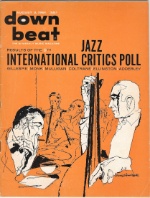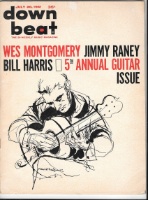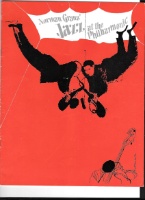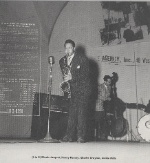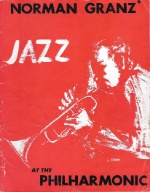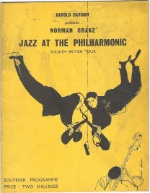Norman Granz, David Stone Martin, and the Jazz at the Philharmonic Legacy
Here at Jazz 88, we tip our KSDS-branded ball caps to Norman Granz and the 80th Anniversary of Jazz at the Philharmonic (JATP), the musically and socially groundbreaking concert series that brought small-combo jazz in its purest form — the jam session — to the grandest concert halls throughout the world.
The live recordings these JATP concerts produced — AS WELL AS the studio sessions that Granz produced for Clef, Norgran, Mercury, Verve, and ultimately Pablo, with talent culled from the deep roster of JATP musicians — are collectors items. And not just because of the groundbreaking format centering both swing and bebop or the signature tenor sax cutting sessions and drum battles that, for better or worse, became a common, if incomplete, shorthand for the concerts themselves. But also because of iconic cover art that epitomized mid-century modernism, communicating to the record-purchasing public that what was on offer was more than just melody, harmony, and rhythm; it was a lifestyle — one that could speak to the listener through his ears and eyes, and also speak on behalf of the listener, communicating his sense of style and sophisticated worldview.
Many, if not most, of the album covers and JATP programs most coveted by collectors were designed by Granz's longtime friend David Stone Martin (DSM), a bona fide American master whose work is displayed at The Met, The MoMa, the Art Institute of Chicago, and the Smithsonian. He illustrated over 400 album covers, most of them jazz and was the art director, first, for Asch Records and its imprints, Disc and Stinson, then, later, for Granz’s labels.
It can be easy to segregate the visual and auditory components of an album, thinking of them as distant relatives. And, for most record execs, an album’s packaging was treated as a marketing campaign’s afterthought. But, Granz, a close friend of Picasso’s after moving to Europe in the late ’50s, understood the importance of packaging the music with a second sensory element that would communicate the essence of the music visually.
“Martin’s style,” writes Granz biographer Tad Hershorn, “with his immediately recognizable signature, was as distinctive in its lines as the sounds of [Charlie] Parker or [Lester] Young. His drawings resonated in communicating the spirit of jazz with weblike tangles of lines that turned twelve-inch album jackets into works of art.”
Which is why no recognition of JATP or Norman Granz is complete without underscoring the importance of David Stone Martin’s work to the entire enterprise’s artistic and commercial aesthetic. “No feature of Granz’s albums,” Hershorn adds, “...other than the music itself, came to signify his recordings more than the drawings of David Stone Martin.”
And so as we celebrate the 80th anniversary of Jazz at the Philharmonic, the crown jewel of the Norman Granz legacy, we celebrate the music itself and the musicians who made it — towering figures like Nat King Cole, Lester Young, Les Paul, Illinois Jacquet, Flip Phillips, J.J. Johnson, Barney Kessel, Roy Eldridge, T. Bone Walker, Coleman Hawkins, Sweets Edison, Ben Webster, Charles Mingus, Oscar Peterson, Billie Holiday, Ella Fitzgerald, and many more — and the brilliant artist David Stone Martin, who made jazz albums look like something people would want to hear. And we also recognize JATP’s architect, the determined, irascible, ruthlessly democratic, and relentlessly goal-oriented Norman Granz, whose Machiavellian methods ensured his demands that musicians and audiences be treated fairly and equitably were always met in full.


